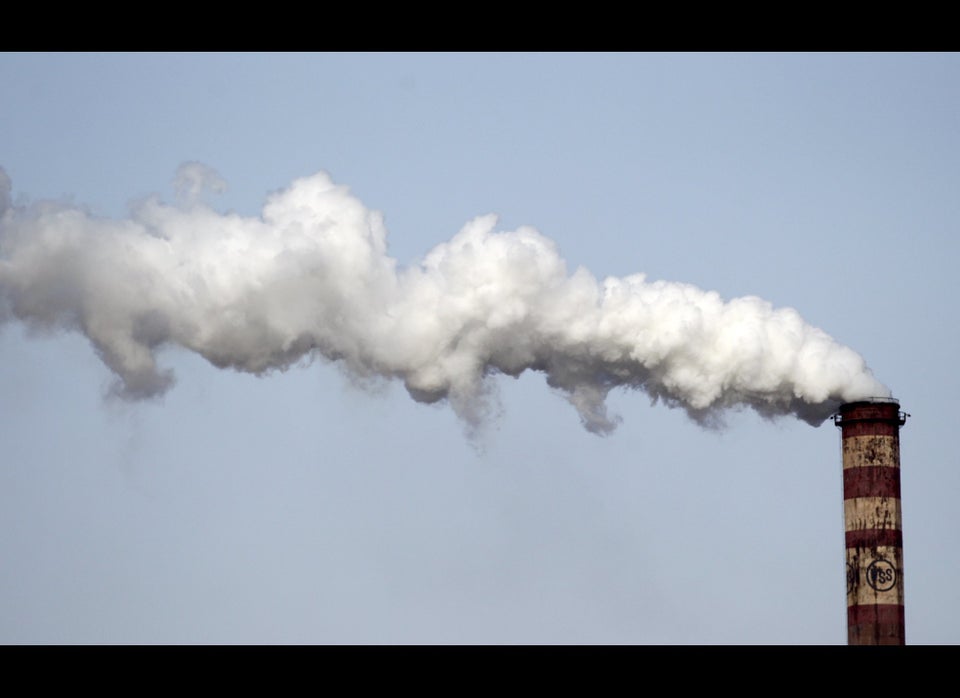It’s been called the Methane Bomb — a stash of gas buried under the Arctic seafloor whose heat-trapping power is much greater, molecule for molecule, than the carbon dioxide people usually worry about. As climate change forces the Arctic to warm, experts warn that methane could escape, speeding global warming. They can’t predict when the great escape might begin, however, or how fast it might proceed. They can’t even rule out the possibility that it might have already started. So they’ve been cruising Arctic waters to get a better handle on where things stand.
Now they’ve got one. According to Christian Berndt, of the GEOMAR/Helmholz Center for Ocean Research, he and his colleagues have known since 2008 that methane is leaking from the ocean bottom near Spitzbergen, an island in Norway’s Svalbard Archipelago. But thanks to a research cruise this past summer, they’ve got reason to believe that global warming could be part of the reason, if not the sole culprit. “We have no proof,” he said in a recent interview. “But we have several lines of evidence that fit well [with this possibility].”
The expedition started from the well-established fact that an enormous amount of methane is frozen into a kind of ice known as methane hydrate, buried in seafloor sediments and containing perhaps twice as much carbon as all the world’s fossil-fuel reserves combined. As long as the hydrates stay cold and pressurized by the overlying sediments, they’re stable. If they warm, they’re in danger of breaking down and releasing the gas into the atmosphere.
It was that danger that sent Berndt into the Arctic in 2008. “We knew that the bottom water has warmed here,” he said, “so we knew it was a place where change could be happening.” The only way to make sure, however, was to drill into the sea floor, and that’s why they went back this summer.
The first thing they found seemed reassuring: carbonate minerals created by interactions with the methane and surrounding material. If the methane came from the breakdown of hydrates, the minerals would be young, since the seafloor has only warmed recently. But they weren’t.
“We need to do further testing,” Berndt said, “but at a wild guess, I’d say they’re 2 or 300 years old at least. They could be 10,000 years old.” Methane has been escaping, in short, for far longer than humans have been affecting the climate.
But they also found that the mineral byproducts of methane leakage came in concentrated pockets at different depths. If methane were coming out steadily from some reservoir deep under the sea floor, the minerals should become gradually more abundant the deeper you look.
Beyond that, scientists already know that methane hydrates are present in this area. It would be quite a coincidence, Berndt said, to find methane emissions in a place where the water is warming and where there are known hydrate deposits — and to have those three things be completely unrelated.
One possible explanation; Berndt thinks that two things may be going on at once: a slow leak of methane that’s been going on for hundreds of years, and also the beginning of the hydrate breakup that scientists have been worried about for.
The only way to find out for sure is to examine hydrate ices in the lab, and that’s not so easy to do. If you simply pull them out of the sea floor, Bernd said, the drop in pressure as they come to the surface can make them break down in just a few minutes. So next year, he and his team are returning to the Arctic with a drilling machine that can extract samples while keeping them under pressure.
Only then will it be possible to say for sure whether a potentially troubling new chapter in the story of global warming has begun or not.
